 1981 Volkswagen Passat (B2) Dimensions, Size & Specs
1981 Volkswagen Passat (B2) Dimensions, Size & SpecsMeasurements of the 1981 Volkswagen Passat, engineered for optimal performance and comfort
| Dimensions | |
|---|---|
| Length: | 4435 mm174.6 in14.6 ft |
| Width: | 1685 mm66.3 in5.5 ft |
| Height: | 1385 mm54.5 in4.5 ft |
| Trunk Capacity: | 480 liter17.0 cu ft |
| Trunk Capacity (Max): | 1542 liter54.5 cu ft |
| Weight Specifications | |
| Curb Weight: | 905-1025 kg1995-2260 lbs |
| Maximal permitted Weight: | 1305-1550 kg2877-3417 lbs |
| Tire Specifications | |
| Rims Size: |
|
| Tire Size: |
|
The Volkswagen Passat B2, produced between 1980 and 1988, represents the second generation of the popular Passat lineup. This generation focused on delivering a practical and comfortable hatchback experience, balancing size and utility for everyday driving. Measuring 4435 mm (174.6 inches) in length, 1685 mm (66.3 inches) in width, and 1385 mm (54.5 inches) in height, the Passat B2 offers a moderate footprint, making it suitable for urban and suburban environments without compromising interior space.
The car’s curb weight ranges between 905 kg and 1025 kg (1995 to 2260 lbs), with a maximum permissible weight between 1305 kg and 1550 kg (2877 to 3417 lbs), reflecting variations in trims and optional equipment. The hatchback design supports a generous luggage capacity of 480 liters (16.95 cubic feet), which expands significantly to 1542 liters (54.44 cubic feet) when the rear seats are folded down, enhancing its versatility for carrying larger or bulkier items.
With 13-inch rims paired with 175/70 R13 tires, the Passat B2 provides balanced handling and optimization for comfort and road grip. Its compact yet roomy layout makes it a standout in its segment during the 1980s, appealing to drivers looking for a reliable, practical car with ample cargo space.
Overall, the Volkswagen Passat B2 hatchback combines an efficient size with versatile interior space, solid build quality, and practical dimensions that have made it a memorable model in Volkswagen’s history. Whether used for daily commuting or weekend trips, it remains an excellent example of early 80s European hatchback engineering.
Discover the standout features that make the 1981 Volkswagen Passat a leader in its class
Have a question? Please check our knowledgebase first.
The Volkswagen Passat B2 hatchback (1981 model) measures 4435 mm (174.6 inches) in length, 1685 mm (66.3 inches) in width, and 1385 mm (54.5 inches) in height. These dimensions place it comfortably within the mid-size segment of its era, offering a balanced footprint that supports interior space efficiency while maintaining a manageable size for urban and suburban driving.
The curb weight of the VW Passat B2 ranges from 905 kg to 1025 kg (1995 to 2259 lbs), depending on the configuration and options. Its maximum permissible weight spans from 1305 kg to 1550 kg (2877 to 3417 lbs). These relatively light weights contribute to agile handling and better fuel efficiency compared to heavier vehicles, making the Passat B2 nimble and economical, especially relevant during the 1980s when efficiency was a notable factor.
The Volkswagen Passat B2 hatchback offers a spacious luggage compartment with a capacity of 480 liters (16.95 cubic feet) when the rear seats are in use. When the rear seats are folded down, the cargo volume significantly expands to 1542 liters (54.45 cubic feet), allowing for versatile transport of larger and bulkier items. This flexibility made the B2 Passat particularly practical for families and users requiring substantial cargo space.
Yes, the Volkswagen Passat B2 fits comfortably within the dimensions of a standard residential garage. Typical garage spaces are about 2400 mm to 3000 mm (7.9 to 9.8 feet) wide and around 4800 mm (15.7 feet) long, which easily accommodate the Passat B2's length of 4435 mm (14.5 feet) and width of 1685 mm (5.5 feet). The hatchback's relatively low height of 1385 mm (4.5 feet) also poses no clearance issues with typical garage door heights.
Compared to the Passat B1, the Passat B2 is slightly larger and more refined in design. The B2's length at 4435 mm (174.6 inches) is an increase over the B1, which measured approximately 4335 mm (170.7 inches) in length. Similarly, the B2 offers enhanced interior space and cargo capacity, especially with its hatchback design, contributing to improved practicality and comfort relative to the earlier B1 generation.
When compared to similar mid-size hatchbacks of the early 1980s, such as the Ford Sierra and Opel Ascona, the Volkswagen Passat B2 stands out due to its balanced dimensions and impressive cargo space. While the length and width are roughly comparable (with slight variations), the Passat B2's large 480 liters (16.95 cubic feet) luggage capacity and 1542 liters (54.45 cubic feet) with folded seats are among the more generous in its class, making it competitive for users prioritizing cargo versatility without excessive exterior size.
The Volkswagen Passat B2 comes standard with 13-inch rims equipped with tires sized 175/70 R13. These tires strike a balance between ride comfort, handling, and fuel economy, aligning well with the vehicle's lightweight dynamics and design for mid-size family use. The relatively narrow width (175 mm) of the tires also supports better rolling resistance, enhancing efficiency especially on the model years typical for the early to mid-1980s.
The relatively low height of 1385 mm (54.5 inches) on the Volkswagen Passat B2 contributes positively to its aerodynamic profile, which can improve fuel efficiency and reduce wind noise at higher speeds. A lower roofline also tends to enhance handling performance by lowering the vehicle’s center of gravity, improving stability through corners. However, the hatchback design maintains adequate headroom and interior comfort despite the low exterior height.
The maximum weight for the VW Passat B2 ranges from 1305 kg to 1550 kg (2877 to 3417 lbs), representing the maximum permissible loaded weight of the vehicle. This includes passengers, cargo, and the vehicle’s own curb weight. Understanding this maximum is important to avoid overloading, which can affect safety, handling, and braking performance. The range indicates versions with differing equipment or optional accessories affecting the vehicle’s weight limits.
The Volkswagen Passat B2 (1980-1988) was distinctive for combining the practicality of a hatchback with the refinement expected from a mid-size car. Its aerodynamic shape was advanced for the time, and the model emphasized space efficiency, offering considerable cargo capacity and comfortable interiors. It was known for reliability, efficient engineering, and versatility, available across various body styles, though the hatchback was particularly popular. These traits helped secure its place as a strong competitor in the European family car segment during the 1980s.
Discover similar sized cars.
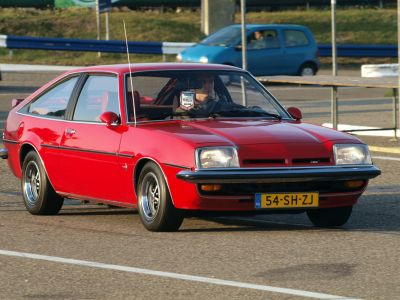
| Production: | 1977-1983 |
|---|---|
| Model Year: | 1978 |
| Length: | 4376 mm172.3 in |
| Width: | 1670 mm65.7 in |
| Height: | 1340 mm52.8 in |
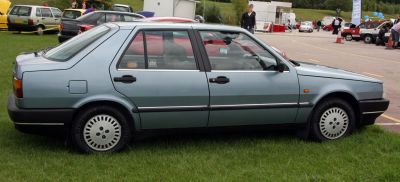
| Production: | 1985-1996 |
|---|---|
| Model Year: | 1986 |
| Length: | 4520 mm178.0 in |
| Width: | 1760 mm69.3 in |
| Height: | 1435 mm56.5 in |
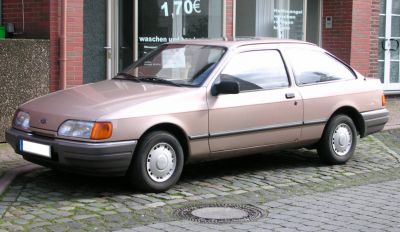
| Production: | 1987-1993 |
|---|---|
| Model Year: | 1987 |
| Length: | 4425 mm174.2 in |
| Width: | 1694 mm66.7 in |
| Height: | 1407 mm55.4 in |

| Production: | 1982-1989 |
|---|---|
| Model Year: | 1983 |
| Length: | 4425 mm174.2 in |
| Width: | 1694 mm66.7 in |
| Height: | 1407 mm55.4 in |
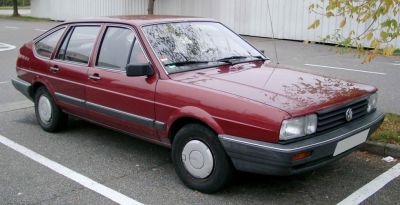
| Production: | 1985-1988 |
|---|---|
| Model Year: | 1985 |
| Length: | 4425 mm174.2 in |
| Width: | 1710 mm67.3 in |
| Height: | 1385 mm54.5 in |
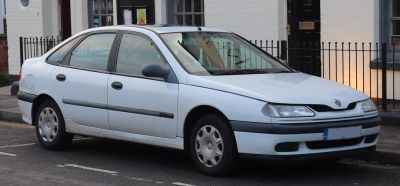
| Production: | 1993-2002 |
|---|---|
| Model Year: | 1994 |
| Length: | 4510 mm177.6 in |
| Width: | 1752 mm69.0 in |
| Height: | 1430-1442 mm56.3-56.8 in |
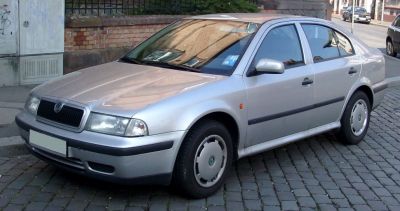
| Production: | 1996-2000 |
|---|---|
| Model Year: | 1996 |
| Length: | 4511 mm177.6 in |
| Width: | 1731 mm68.1 in |
| Height: | 1429-1730 mm56.3-68.1 in |
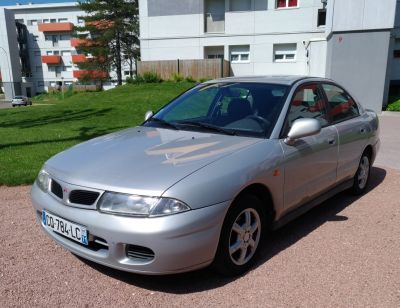
| Production: | 1995-2003 |
|---|---|
| Model Year: | 1995 |
| Length: | 4445-4475 mm175.0-176.2 in |
| Width: | 1710 mm67.3 in |
| Height: | 1405 mm55.3 in |
